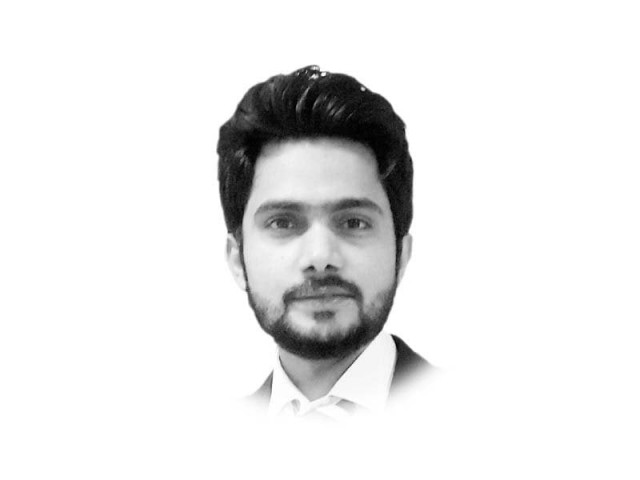Changing face of India
In India, every now and then news breaks about rape-cum-murder cases, mob-lynching, discrimination against minorities

The writer is a research assistant at the Centre for International Strategic Studies, Islamabad. He can be reached at riazkhokhar11@gmail.com or Twitter handle, @riaz1khokhar
In India, every now and then news breaks about rape-cum-murder cases, mob-lynching, discrimination against minorities, suppression of dissent, and so on. Yet, global perception of India as an emerging economic power of South Asia, the largest democracy, a liberal and secular state has remained intact. No longer however.
John Arquilla once noted that “in today’s global information age, victory may sometimes depend not on whose army wins, but on whose story wins”. Moreover, in Shashi Tharoor’s words, for a story to be successful, it is not sufficient what is being told, but equally important is what is being heard and seen on the ground.
It may be correct to say that India has managed perception of its image well. However, the butterfly effect of chaos theory, propounded by Edward Norton Lorenz, suggests, “even the smallest event can be consequential in altering the fate of generations”. The recent horrendous events under the BJP-led government have indeed removed the optical mirage of the global perception about India as a secular, liberal, peaceful and just state.
The cases that have jolted global perception about India are as follows.
In April 2018, there was a rape-and-murder case of an eight-year-old girl in Kathua, Jammu & Kashmir, and of a teenager girl in Unnao, Uttar Pradesh, and in the latter incident the state’s legislator was involved. Brutal mob-lynching of Muslims occur every now and then over allegations of cow slaughter. Killing of Dalits, previously called the Untouchables, has continued unabated. There also exists suppression of dissent, as exemplified by the cruel murder of the journalist Gauri Lankesh in Bangalore in September 2017.
On 16th April, The New York Times condemned Modi’s silence on the perilous situation faced by women and minorities in India. It also criticised Modi’s “hollow talk” of citing the rape-and-murder cases as “incidents being discussed”. It termed Modi’s silence both distressing and worrying for the world’s largest democracy. It maintained that the ongoing crimes against women, Muslims, Dalits and the underprivileged are part of a systematic terrorising agenda of Hindu extremist ideology, Hindutva.
In a Washington Post article, Barkha Dutt, an Indian journalist, called the two mentioned rape-cum-murder cases as events of “national shame” for India. According to her, such events only revealed “entrenched misogyny, religious hatred and a shameful class bias”. A Guardian op-ed, authored by Amrit Wilson, termed India a “republic of fear”. It quoted an Indian feminist lawyer, Vrinda Grover, who said that “the Hindutva’s hate brigade is the BJP’s core constituency”.
The Guardian has also lamented the Indian government’s attempt to revoke the legislation that protected Dalits against possible atrocities. The Indian Supreme Court’s ruling against the Scheduled Caste and Scheduled Tribe (Prevention of Atrocities) Act resulted in a massive protest by Dalits, in which nine people were killed and thousands injured. More than 40,000 offences by upper caste Hindus were registered in 2016 alone against lower caste Indians. More distressing is the fact that most of the accused men in murder cases of Dalits have been granted bail by courts.
In an Independent column, Sunny Hundal noted that Sikhs in Canada and Britain have succeeded in coming to power and have been quite vocal for Sikhs rights in India. In 2015, twenty legislators were elected in Canada. In 2017, two Sikh MPs from Britain ridiculed India over Sikh issues. In the US, there is a growing demand for Sikhs’ political representation from their base in California.
On the other hand, India is trying to portray the demands for justice for the 1984 massacre of Sikhs as separatist agenda. Meanwhile, in 2017, the Ontario’s state parliament labelled the 1984 incident as genocide against Sikhs.
Last but not the least, Indian atrocities and human rights violation in Kashmir are also highlighted in international media. The Guardian, Huffington Post, or even the Indian Scroll.in prominently criticised the Indian army’s abuse of human rights in Kashmir.
These ground realities in India have outweighed India’s rhetoric about its being a liberal, secular democracy. As Shashi Tharoor stated in his recent Gulf News article, the “troubling internal disruptions have begun to tarnish this global perception of India”. Thus far, India has succeeded in its foreign affairs by putting its economic potential ahead of human rights. International community’s economic interests in India have overshadowed India’s human rights abuses in Kashmir, against religious minorities, women and the dissident voices.
For India to maintain its soft image in the world, it has to move away from following the policy of communal violence and religious hatred promoted by the Hindutva ideologues. It has to start respecting its women. And also, it has to stop the state oppression against Kashmiris. A country in the long run is understood the way it actually is, not how it presents itself to the world. Truth ultimately becomes evident.
Published in The Express Tribune, May 15th, 2018.
Like Opinion & Editorial on Facebook, follow @ETOpEd on Twitter to receive all updates on all our daily pieces.















COMMENTS
Comments are moderated and generally will be posted if they are on-topic and not abusive.
For more information, please see our Comments FAQ